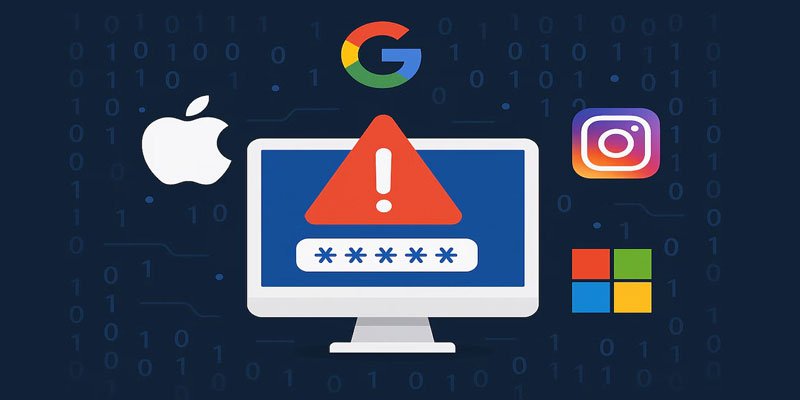
Massive Leak Exposes 184M Passwords — Google, Instagram Users at Risk
Massive Breach Uncovers Millions of Login Credentials
A massive cybersecurity breach has compromised over 184 million user records, exposing sensitive login information tied to platforms like Google, Instagram, Apple, Facebook, and Microsoft, as well as banking and government services. Cybersecurity researcher Jeremiah Fowler uncovered the unprotected database, which was publicly accessible online and not directly linked to any specific company.
The breach revealed plain-text email addresses, passwords, and direct login URLs—a combination experts warn could open the floodgates for cybercrime at an unprecedented scale.
What Is a Data Breach—and Why This One Is Alarming
A data breach occurs when unauthorized individuals gain access to private or sensitive information. It can stem from hacking, insider leaks, poor cybersecurity measures, or in this case, a cloud misconfiguration that left a database unprotected.
The severity of this breach lies not only in the sheer volume of records leaked but also in the quality of the exposed data. Unlike breaches where passwords are encrypted, these credentials were stored in plain text—meaning anyone who accesses the data can use it instantly, without decryption.
The Platforms and Services at Risk
The leaked credentials span a wide range of services, including:
· Google accounts (Gmail, Drive, Workspace)
· Meta platforms (Facebook, Instagram)
· Apple iCloud and iTunes
· Microsoft services (Outlook, Office 365, Teams)
· Banking apps, crypto wallets, and government portals
Worse, the presence of direct login URLs could allow cybercriminals to bypass passwords entirely, essentially offering one-click access to victims’ personal and financial data.
The Cause: Cloud Misconfiguration and Poor Security Practices
The breach likely originated from a misconfigured cloud storage environment, possibly hosted on AWS, Google Cloud, or Microsoft Azure. Security missteps like publicly accessible storage buckets or weak access controls have been cited as the leading cause of 82% of cloud-related breaches in the past year, according to IBM.
This highlights a major concern in today’s digital age: as businesses increasingly rely on cloud services, many fail to secure their data properly, creating easy targets for cybercriminals.
Risks and Ramifications: What This Means for Users
This breach represents a goldmine for hackers. With such data in hand, malicious actors can:
· Launch phishing attacks using verified email addresses
· Perform credential stuffing across other platforms
· Engage in identity theft or unauthorized financial transactions
· Exploit accounts via auto-login URLs without even needing passwords
Precautionary Steps: How to Stay Safe
For individuals and organizations alike, this breach is a wake-up call. Here are essential steps to minimize risk:
· Immediately change passwords for any linked services
· Enable two-factor authentication (2FA) wherever possible
· Avoid reusing passwords across platforms
· Use password managers to generate and store strong, unique credentials
· Monitor financial and email accounts for suspicious activity
· Businesses should audit cloud configurations and restrict public access to sensitive data
A Stark Reminder in a Connected World
This breach is not just a technological failure—it's a human one, driven by complacency and oversight. It illustrates how poor digital hygiene and insecure cloud setups can expose millions in a heartbeat.
As our reliance on digital platforms grows, so must our commitment to vigilance, encryption, and accountability. Because in a world of one-click access, it only takes one misstep to open the door to cybercrime.






